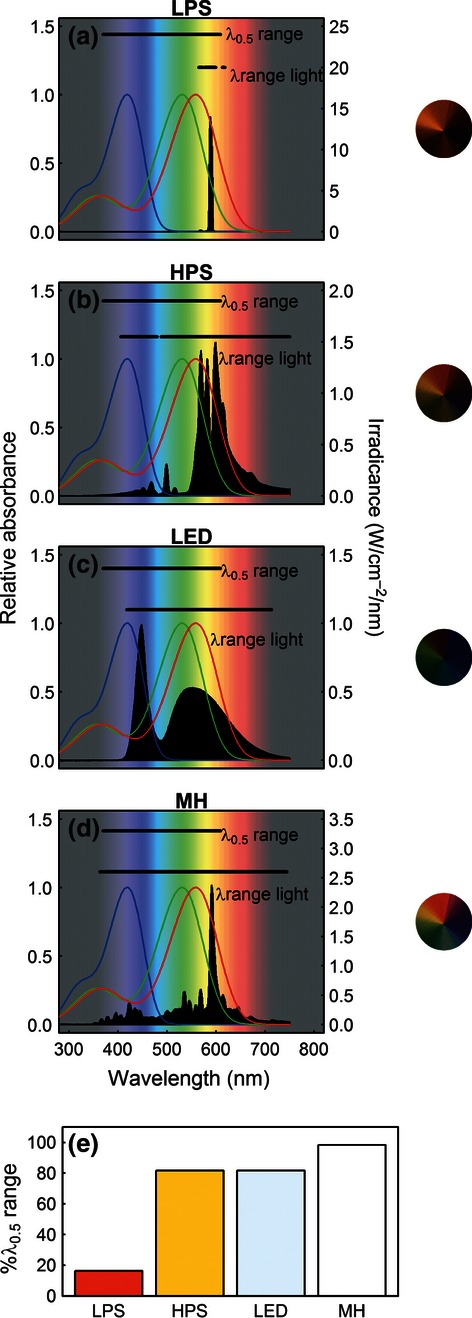Fig. 1.

The colour vision performance of human beings under light emitted from four contrasting street lighting technologies. (a). LPS lamps which emit light over a narrow region of the light spectrum (λrange light) stimulate a smaller proportion of the region of the light spectrum to which human visual pigments are half maximally sensitive (λ0.5 range) (dashed line), hence objects which reflect light outside of this range appear less bright (colour wheel insert). (b,c,d). Broad spectrum street lighting technologies (HPS, LED, MH) emit light across a broader region of the light spectrum to which humans are sensitive, allowing us to identify objects reflecting light across a broader range of wavelengths. (e). The visual performance of humans under each of the street lighting types can be compared using an index (% λ0.5 range stimulated) calculated as the percentage of λ0.5 range overlapped by λrange light. A–D. Solid black lines represent the α and β band absorbance curves for the three visual pigments used to detect light in the human visual system. The emission spectrum of each street light is represented by the filled curve. The plot background approximates the colour of the light detected at each wavelength by the human visual system. UV light is emitted below 400 nm and infrared light above 700 nm. Colour wheel inserts are photographic images taken of the same colour wheel under each of the street lighting types using a standard digital SLR camera which detects red, green and blue light at approximately the same wavelengths as human visual pigments are maximally sensitive.
